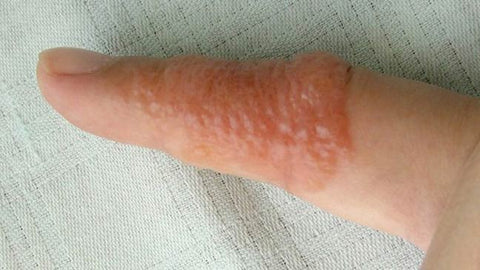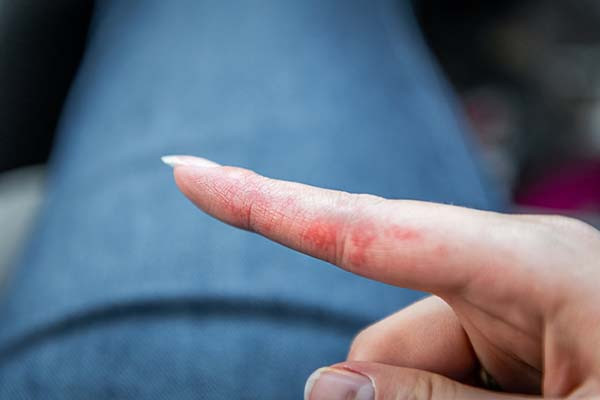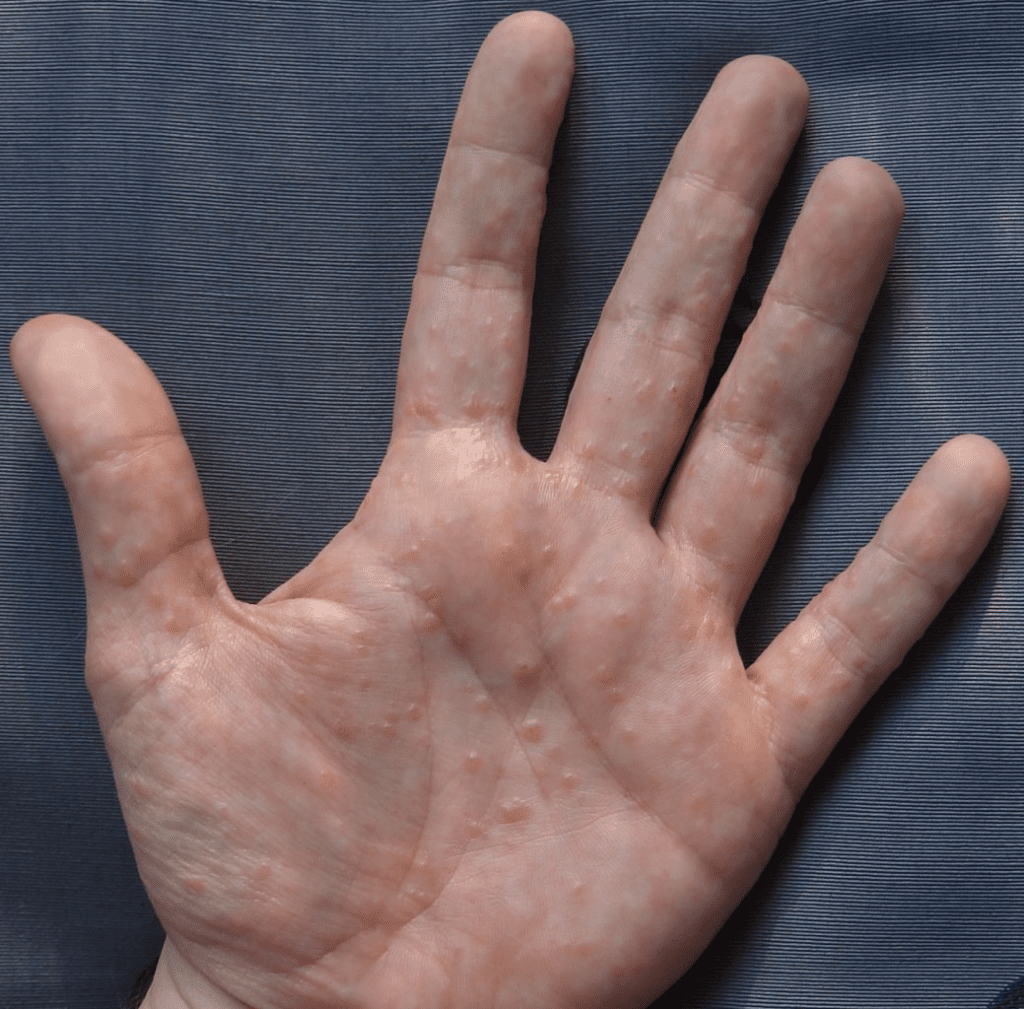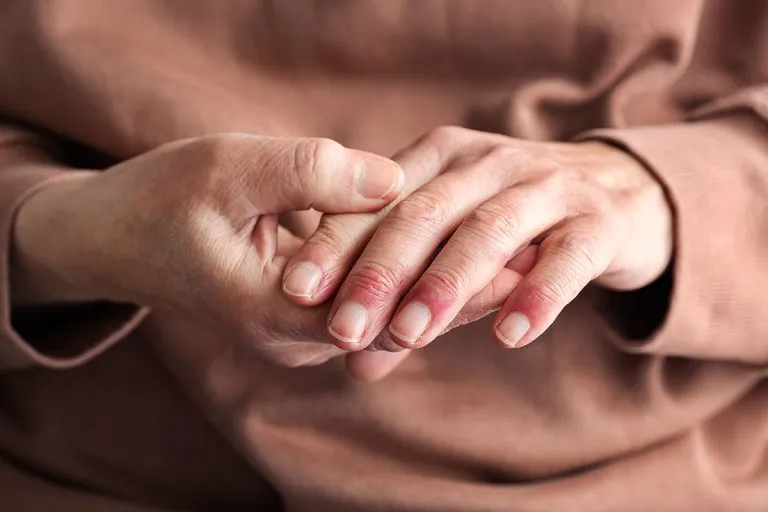Dyshidrotic eczema, also known as dyshidrosis or palmoplantar eczema, is a skin condition that primarily affects the hands and feet. It manifests as small, itchy blisters that can be quite uncomfortable and sometimes painful. While the exact cause of dyshidrotic eczema remains unclear, it is often triggered by environmental factors, allergies, or stress. This article explores the symptoms, causes, risk factors, and treatment options available for managing this skin condition.
What Is Dyshidrotic Eczema?

Dyshidrotic eczema is a type of eczema that leads to the formation of fluid-filled blisters on the palms of your hands, the sides of your fingers, and the soles of your feet. The blisters typically appear in clusters and can cause intense itching, burning, or even pain. These blisters can last for up to four weeks and may leave the skin dry and peeling once they heal.
The exact cause of dyshidrotic eczema is not well understood, but it is commonly linked to factors such as allergies, stress, and sweating. While the condition can be uncomfortable, it is not contagious and typically resolves on its own with the right treatment and care.
What Causes Dyshidrotic Eczema?
The triggers for dyshidrotic eczema vary from person to person. Several factors may contribute to flare-ups, including:
- Allergic reactions: Some individuals may develop dyshidrotic eczema due to allergies to certain metals, such as nickel or cobalt, found in jewelry, coins, or even foods.
- Sweating: Excessive sweating, especially during warmer weather, can provoke an outbreak of dyshidrotic eczema. It is particularly common in people with hyperhidrosis, a condition that causes excessive sweating.
- Stress: Emotional stress has been linked to flare-ups of dyshidrotic eczema. Those experiencing high levels of stress may notice their symptoms worsening.
- Environmental factors: Exposure to allergens, chemicals, or irritants in soaps, detergents, and skincare products can cause or aggravate dyshidrotic eczema.
- Medications: Some medications, such as aspirin, birth control pills, or intravenous immunoglobulin (IVIG) treatments, have been known to trigger the condition in susceptible individuals.
Risk Factors for Developing Dyshidrotic Eczema
Certain factors may increase the likelihood of developing dyshidrotic eczema, including:
- Genetics: A family history of eczema or allergies increases your risk of developing dyshidrotic eczema.
- Occupational exposure: Those who work with metals, cement, or other harsh materials may be at a higher risk due to repeated exposure to skin irritants.
- History of skin conditions: Individuals with other forms of eczema, such as atopic dermatitis, or those with asthma or allergic sinusitis, are more prone to experiencing dyshidrotic eczema.
- Age group: The condition is most commonly seen in adults aged 20–40 years old.
Symptoms of Dyshidrotic Eczema
The first signs of a dyshidrotic eczema flare-up often include a burning or itching sensation on the hands or feet. Following this, tiny blisters may appear, primarily on:
- The palms of your hands
- The sides of your fingers
- The soles of your feet
These blisters may cluster together, forming larger patches of raised, inflamed skin. As the blisters heal, the skin may become dry and flaky, sometimes leading to painful cracking or peeling. In severe cases, the skin may become infected, leading to redness, swelling, and pus-filled blisters.
Diagnosing Dyshidrotic Eczema

If your symptoms last longer than a week or become particularly painful, it’s essential to consult with a healthcare provider. A dermatologist can usually diagnose dyshidrotic eczema by examining your skin and asking about any potential triggers, such as new products or activities that involve metal exposure.
In some cases, your doctor may recommend allergy testing or take a small skin sample to rule out infections. Treatment typically begins with over-the-counter or prescription creams to help soothe and heal the affected skin.
Treatment Options for Dyshidrotic Eczema
Managing dyshidrotic eczema involves treating the symptoms and avoiding potential triggers. Treatment options may include:
- Topical corticosteroids: For mild to moderate cases, corticosteroid creams or ointments can help reduce inflammation, heal the blisters, and soothe itching.
- Moisturizers: Applying thick, fragrance-free moisturizers or barrier repair creams helps keep the skin hydrated and reduce the risk of flare-ups.
- Cool compresses: Soaking the affected area in cool water or applying cool compresses for 15–20 minutes several times a day can help reduce itching and inflammation.
- Anti-itch medications: Over-the-counter antihistamines or anti-itch creams may provide temporary relief from itching.
- Avoiding triggers: Identifying and avoiding triggers such as certain metals, harsh soaps, or stress is key to preventing future outbreaks.

In more severe cases, your doctor may prescribe stronger medications, such as pimecrolimus or tacrolimus creams, or recommend light therapy (phototherapy) to manage symptoms. Systemic treatments, such as oral steroids or immunosuppressants, may also be prescribed in cases where topical treatments are not effective.
Home Remedies and Lifestyle Adjustments
For individuals experiencing mild dyshidrotic eczema flare-ups, a few home remedies may offer relief:
- Keep the skin moisturized: Use thick, fragrance-free creams or ointments immediately after bathing to lock in moisture.
- Avoid triggers: Minimize contact with irritants such as soaps, detergents, metals, and other chemicals that may aggravate your skin.
- Manage stress: Practicing relaxation techniques such as meditation, deep breathing, or yoga can help reduce stress-related flare-ups.
- Stay cool and dry: Avoid excessive sweating, and keep your hands and feet dry. Cotton gloves or socks may help reduce moisture buildup during the day.
Complications and Prevention of Dyshidrotic Eczema
Though dyshidrotic eczema typically clears up within a few weeks, repeated scratching can lead to infections, scarring, and a delay in the healing process. Keeping your nails short and avoiding scratching can help reduce this risk.

While it’s impossible to fully prevent dyshidrotic eczema, some lifestyle changes may help reduce the frequency and severity of flare-ups:
- Wear protective gloves: When working with irritants such as soaps or metals, wear gloves made from cotton or latex to protect your hands.
- Avoid nickel and cobalt: If you’re allergic to these metals, avoid wearing jewelry containing them and consult with a doctor about reducing these elements in your diet.
- Keep a trigger journal: Track your activities, diet, and symptoms to identify potential triggers and patterns.
Conclusion
Dyshidrotic eczema can be a challenging condition, but with the right treatments and lifestyle adjustments, it is possible to manage symptoms and reduce flare-ups. By understanding potential triggers and seeking appropriate medical care, individuals with dyshidrotic eczema can improve their quality of life and minimize discomfort. While it may take time to identify the best course of treatment, staying informed and proactive is key to managing this condition effectively.


